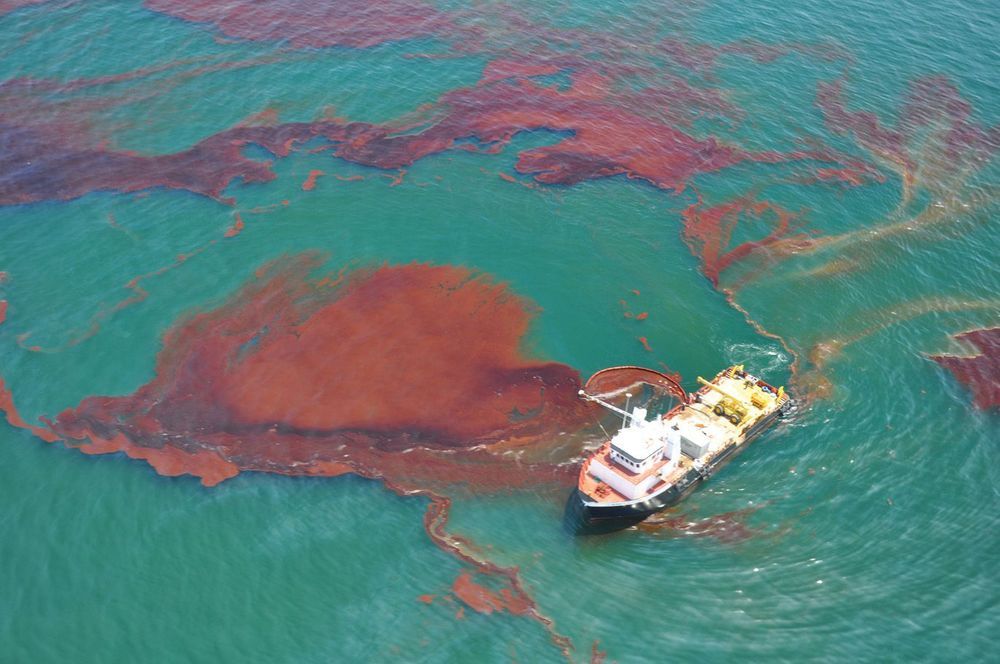2015
After an oil spill, the number one priority is finding a way to contain and remove the oil. Boat operators sometimes deploy physical booms to trap the oil so that it can be siphoned or burned off of the water’s surface. But, because oil in water is tricky to contain, other methods for corraling it call for adding manmade chemicals to the water.
In a technique called dispersion, chemicals and wave action break down the oil into smaller particles, which then disperse and slowly biodegrade over a large area. Then, there is chemical herding. To clean up an oil spill with a chemical herder, crews spray a compound around the perimeter of the spill. The compound stays on the surface and causes the oil to thicken. Once it’s thick enough, it can be burned off. Chemical herding requires calm water, which makes it unreliable in some spills, but, unlike mechanical removal or dispersion, it gets all the oil. The technique has been around since the 1970s, but, until now, the chemicals used to herd the oil, called soap surfectants, didn’t break down over time. After the oil burned off, they’d still be in the ecosystem.
Researchers at the City College of New York, led by chemist George John and chemical engineer Charles Maldarelli, have developed a way to clean up oil using a chemical herder made of phytol, a molecule in chlorophyll that makes algae green.
It’s the first non-toxic, natural way to remediate oil spills.
